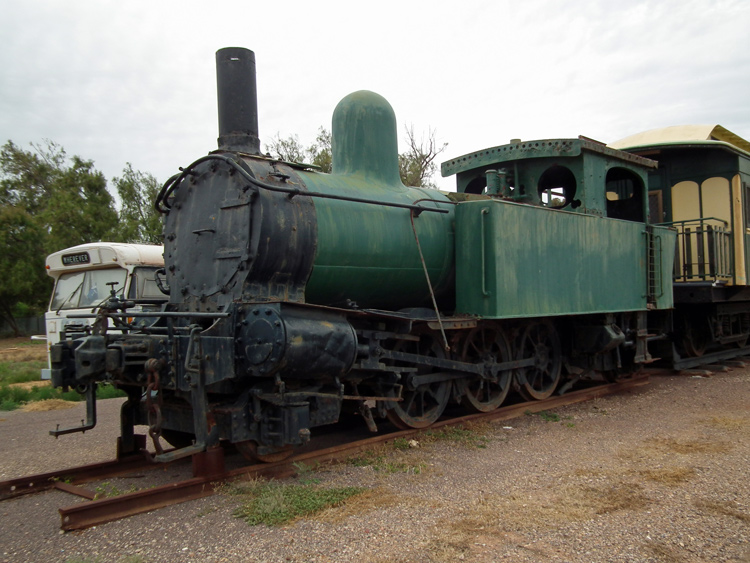
|
BHP Whyalla No.2 Beyer Peacock b/n 3357 of 1891 |

BHP Whyalla No.2 displayed at the Mt Laura Homestead.
This photograph was taken by David Griffiths and is dated 5 February 2012.
This locomotive was built by Beyer Peacock & Co. in 1891 as their builder's number 3357 a and supplied to the Broken Hill Proprietary Co (BHP), initially for use at Broken Hill. b This design is essentially a 2-6-2T version of the very successful Beyer Peacock & Co. 2-6-0 tender locomotive design, which operated in Australia as the TGR "C-class", SAR & Silverton Tramway "Y-class" and WAGR "G-class" and variants. f
Initially unnumbered (as you don’t need numbers when there is only one locomotive) it was put into service at Broken Hill, but was found to be too heavy to work the light tracks there. A temporary exchange with the SAR for V class number 11 was made and it worked to Port Pirie for the SAR on 29 September 1891 and given the temporary number “0” in the SAR fleet. d
BHP ordered a more suitable small locomotive from Nasmyth Wilson and when this arrived in February 1893 they asked for their locomotive back in return for the V Class. It arrived back at Broken Hill in May 1893 where it was hired to Silverton Tramway who classified it as “Y” class and gave it number “6”. BHP took over operations of British Broken Hill Pty Ltd and Block 14 and recalled the locomotive to their own service. It is presumed that they had also strengthened the track in the meantime. Since the Nasmyth Wilson had already been numbered “1”, this locomotive acquired the number “2”. d, e
The Nasmyth Wilson loco No 1 was transferred to Whyalla (then known as Hummocky Hill) for use on the newly-established BHP iron-ore railway. There are many reports, all of which date to the recollections of the locomotive foreman in 1925 which claim that No 2 hauled the first load of iron ore on 28 August 1901. The date may be correct but the locomotive is not – as this locomotive was not transferred to Whyalla until July 1902. c
No 2 was the principle motive power on the tramway until it was displaced by a pair of Baldwin 4-6-0 locomotives in 1914 (Nos. 4 & 5) when the traffic was expanded considerably to feed the new steelworks at Newcastle. The BHP operation at Whyalla later expanded to include a blast furnace and steel mill complex. Here No. 2 became one of a fleet of three Beyer Peacock 2-6-2T tank locomotives (Nos. 2, 2A and 3), together with two 2-6-0ST versions (Nos. 1 &.1A). To complete the fleet of Beyer Peacock locomotives, BHP Whyalla's No.3A was of the 2-6-0 tender locomotive configuration. b
The BHP Whyalla steelworks railway was converted to standard-gauge when linked to the national standard-gauge network in 1963 b while the iron-ore railway to the mines remained at 3' 6" gauge. BHP Whyalla No.2 was initially preserved on the beachfront at Whyalla, but inevitably deteriorated rapidly in the moist salty air. In 1983 it was relocated to the Mt Laura Homestead Museum in Whyalla. c
Virtually identical locomotives were also supplied by Beyer Peacock & Co. to the metre-gauge Alcoy - Gandia railway in Valencia, Spain. Photographs and details of two preserved Spanish sister locomotives (Beyer Peacock & Co. b/n 3277 of 1890 and b/n 3282 of 1891) can be found on the Preserved Steam Locomotives of Spain website on the Valencia page and are reproduced below. f
The fifth edition of Leon Oberg's book "Locomotives of Australia" provides a thorough overview of this family of Beyer Peacock & Co. designed locomotives used by many Australian railway operators from 1885 onwards, and is recommended reading. f
My thanks to David Griffiths for providing from his collection the photographs on this page, together with much of the text.
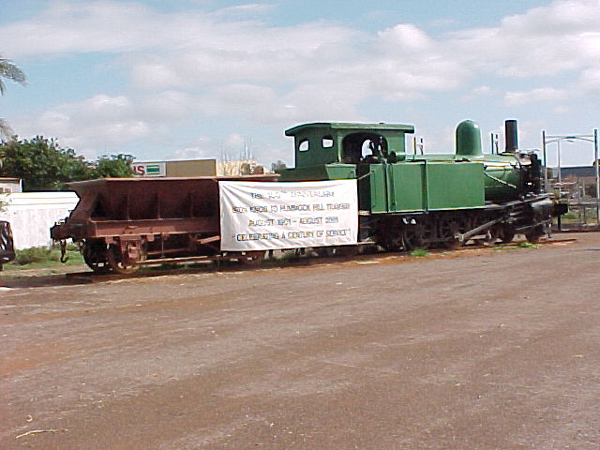
D
espite the sign displayed here, No.2 could not have hauled the first ore train in August 1901 as it wasn’t there at the time.The claim originates in a story published in the BHP Review in 1925 based on the (faulty) memories of the foreman. c
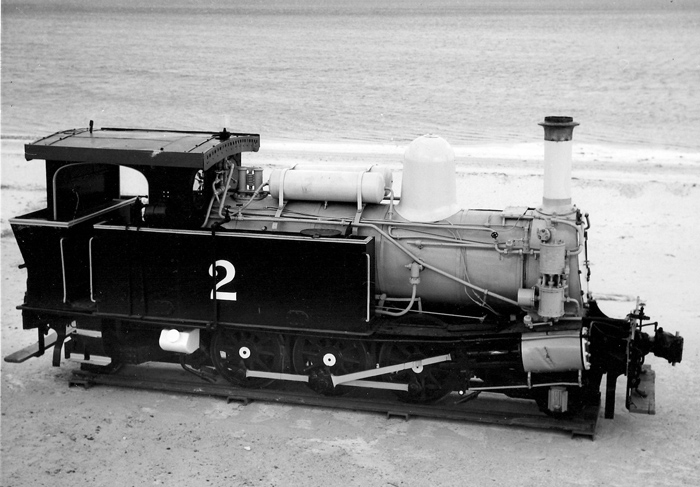
This view shows
No 2 when first installed on the Whyalla beachfront.Comparison with the later views at Mt Laura Homestead shows various items that were lost during the deterioration on the Whyalla foreshore,
such as the copper chimney cap, wooden front & rear shunters steps and the twin air receivers mounted above the firebox.
Original photograph from the BHP Whyalla records (copyright expired), from the collection of David Griffiths.
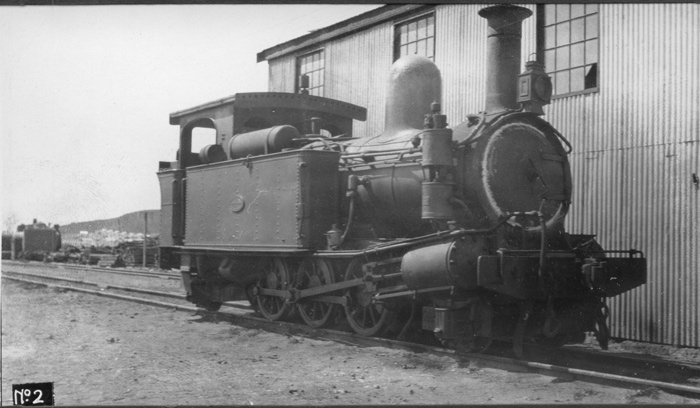
This circa-1930 view shows either Loco 2 or 2a at the Whyalla loco depot.
Original photograph from the BHP Whyalla records (copyright expired), from the collection of David Griffiths.
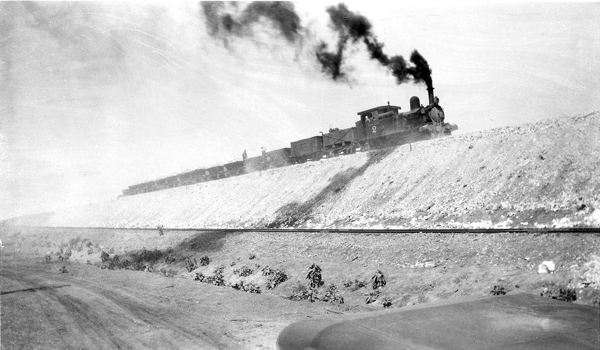
The only picture of No2 on the main line. It’s not an ore train (though it one was) it is regrading the track circa 1934
Original photograph from the BHP Whyalla records (copyright expired), from the collection of David Griffiths.
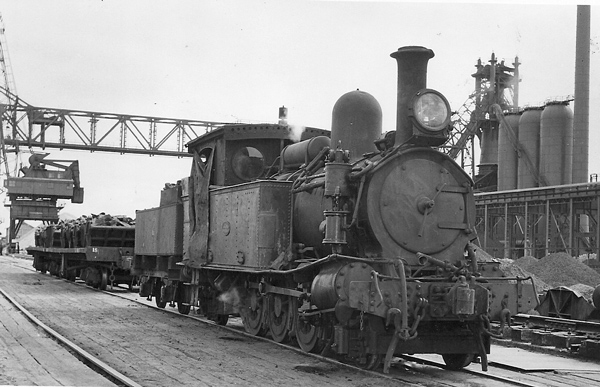
Probably No2 (but not sure) at the Blast furnace wharf with a load of pig iron date uncertain.
Original photograph from the BHP Whyalla records (copyright expired), from the collection of David Griffiths.
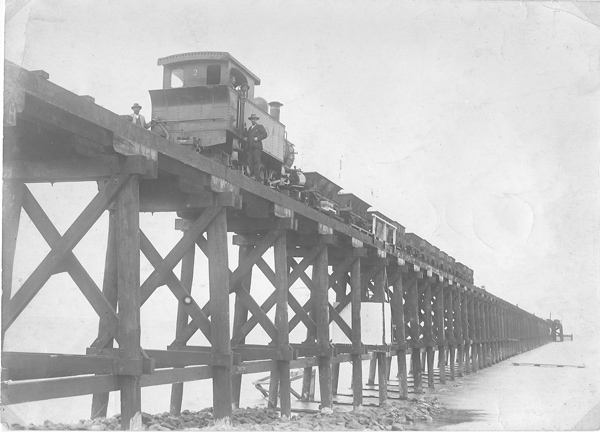
Clearly identified No2 on the Whyalla Jetty very early c1904.
Original photograph from the BHP Whyalla records (copyright expired), from the collection of David Griffiths.
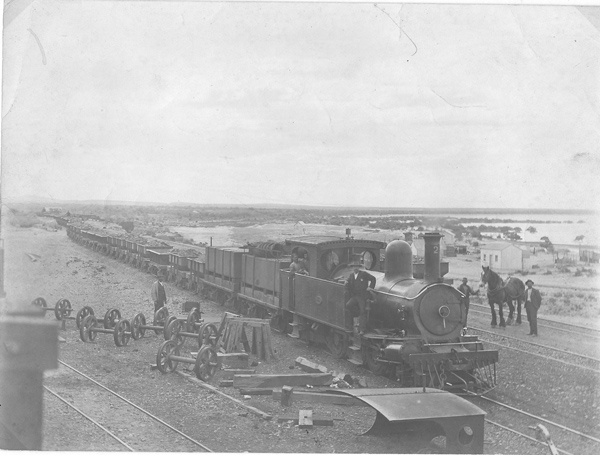
Same day as the previous picture, probably half an hour earlier.
This picture helps date the pair of them; The cab on the ground in front of No.2 is clearly identifiable as that of the third
loco originally named “Iron Monarch” but more usually known as “Kilmarnock”.
That was put in service 14 November 1901; this picture is likely to be during an early overhaul.
The water quality was poor there and it required heavy boiler maintenance the year after being put in service. c
Original photograph from the BHP Whyalla records (copyright expired), from the collection of David Griffiths.
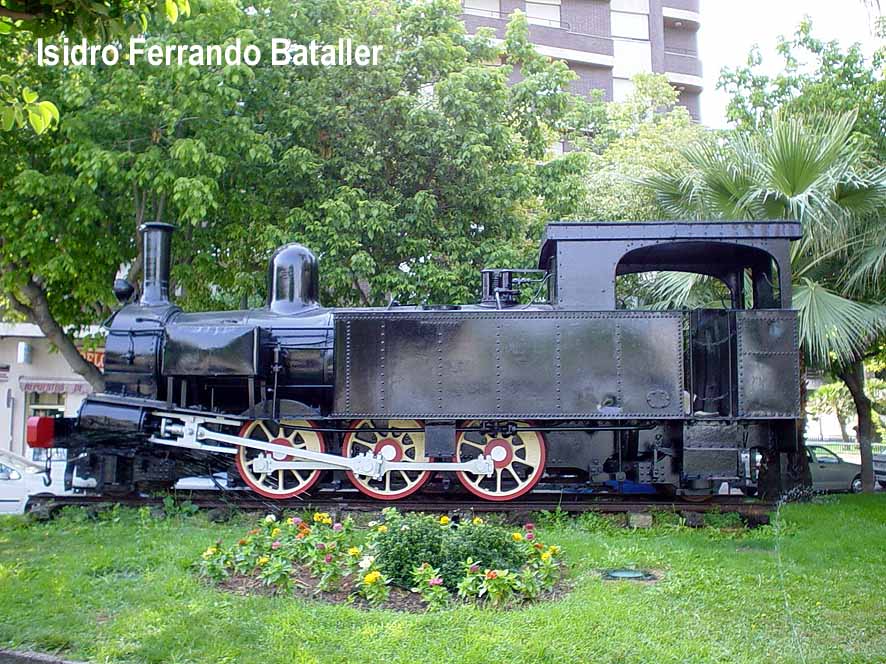
Spanish cousin: Beyer Peacock 3282 of 1891 displayed at Gandia, Spain.
This locomotive was No.7 "COCENTAINA" of the metre-gauge Alcoy-Gandia Railway.
Photo by Isidro Ferrando Bataller and used with permission from the Preserved Steam Locomotives of Spain website.
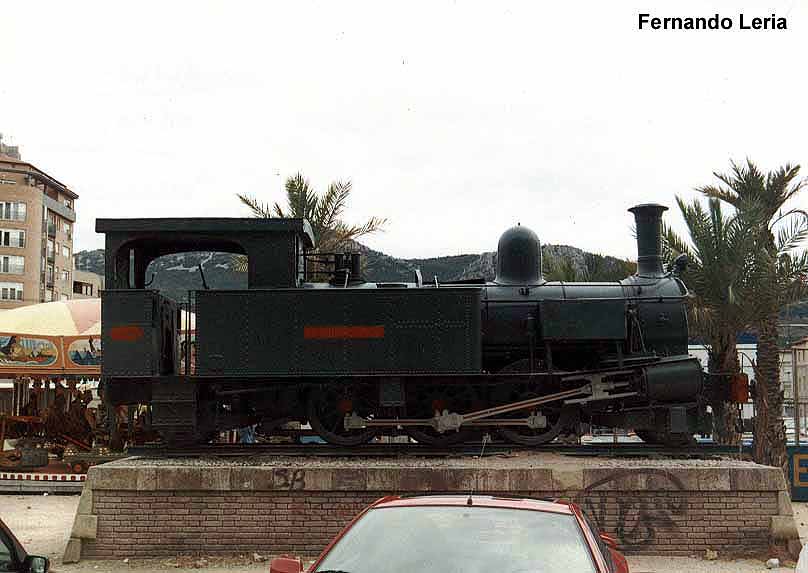
Alcoy-Gandia Railway No.2 "VILLALONGA" (Beyer Peacock 3277 of 1890) displayed at Alcoy, Spain.
Photo by Fernando Leria and used with permission from the Preserved Steam Locomotives of Spain website.
References
|
a |
L. Oberg, 'Locomotives of Australia', published by J. W. Books Pty Ltd, Brookvale NSW. 1982 reprint. Page 265 |
|
b |
L. Oberg, 'Locomotives of Australia, 1854 to 2010', Fifth Edition, published by Rosenberg Publishing Pty Ltd, 2010. Pages 65-71 |
|
c |
Information provided by David Griffiths via email 14 March 2012 & 17 March 2012 |
|
d |
Colquhoun D.A. South Australian Railways Narrow Gauge No 0 ARHS Bulletin April 1981 |
|
e |
Griffiths D. BHP Tramways Centenary History Mile End Railway Museum 1985 |
|
f |
Webmaster's personal observation or comment. |
Page updated: 4 March 2015